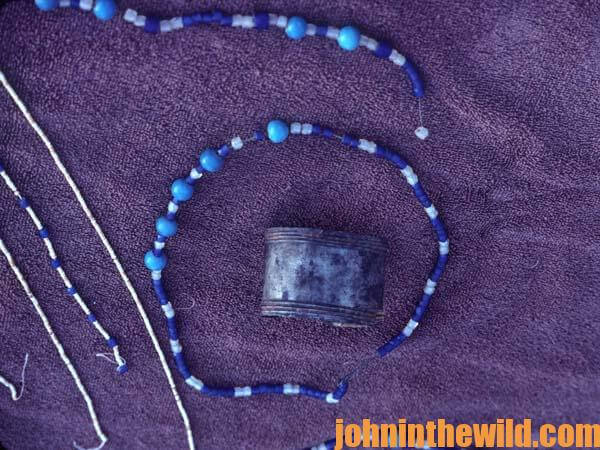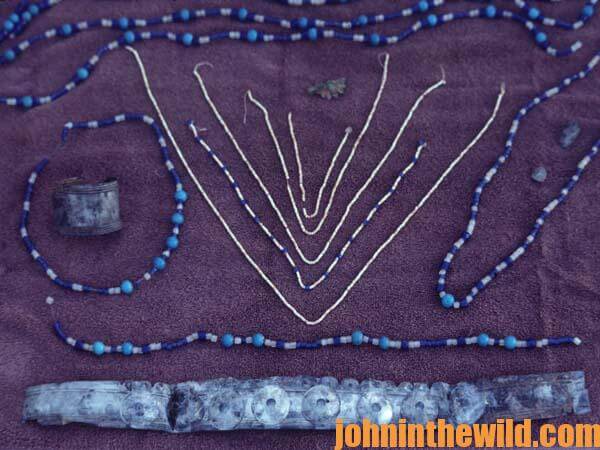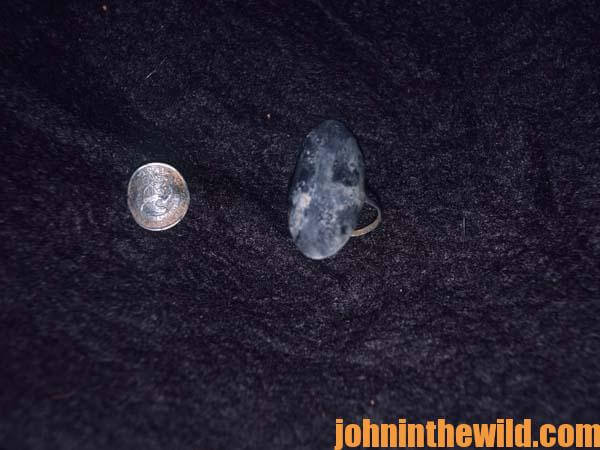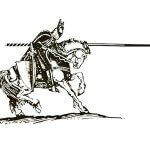John’s Note: Most people think of American frontiersmen as the fur traders, pioneers and European settlers who came to this country. But the true frontiersmen were the people who lived here long before Columbus ever discovered America. These civilizations hunted, farmed, lived, died, were buried and were lost or abandoned. If a people are to know their future, they must learn and understand their past. The treasure hunter who helps a people find and know this past performs a service for the early people, their descendants and all mankind. Many outdoorsmen enjoy studying early times and using their metal detectors. Always be sure to check state and federal regulations associated with treasure hunting.
I’ve been interested in hunting for Native American and Civil War mementos all my life, since my dad and my brother always have enjoyed history and searching for treasures from the past, which inspired my getting a history degree. I met a man, Jeff White of Leeds, Alabama, in the late 1970s who had studied the history of armies and the Indians around his home and whose family enjoyed adventures outdoors hunting for Indian settlements. His research led him to old Union encampments to discover minie balls and other items and Indian jewelry, arrowheads and pots. The number one trade item in the early 1800s was rum packaged in brown glass bottles – often found in plowed fields. On October 29, 1978, White, his wife, daughter and brother had secured the permission of a landowner to search a field near Talladega, Ala.
 “I knew Indians had traded there because of the broken rum bottles and other debris we’d found on earlier trips, probably left over from the General Andrew Jackson era when he and his army marched near here,” White remembers. Working their way up to a knoll, White discovered three horse bits, stacked one on top of the other with one of them silver-plated, and also a silver spur and hundreds of white and blue beads in long lines, once strung together with a thread that long since had rotted. Then 10-12 inches down, they found a copper broach and a flat and thin band of metal that White assumed was made of pewter or tin but was silver. “This silver crown, very thin and pliable and probably worn like a headband, had eight cone-shaped discs made of stamped Half dimes, with two of them bearing the dates of 1820 and 1809,” White reports. “The silversmith who made the crown was an artisan of the highest degree.”
“I knew Indians had traded there because of the broken rum bottles and other debris we’d found on earlier trips, probably left over from the General Andrew Jackson era when he and his army marched near here,” White remembers. Working their way up to a knoll, White discovered three horse bits, stacked one on top of the other with one of them silver-plated, and also a silver spur and hundreds of white and blue beads in long lines, once strung together with a thread that long since had rotted. Then 10-12 inches down, they found a copper broach and a flat and thin band of metal that White assumed was made of pewter or tin but was silver. “This silver crown, very thin and pliable and probably worn like a headband, had eight cone-shaped discs made of stamped Half dimes, with two of them bearing the dates of 1820 and 1809,” White reports. “The silversmith who made the crown was an artisan of the highest degree.”
 A couple of days later White’s family located a bracelet, beads and two rings made of silver. The Whites felt they had made a major archaeological discovery of historical value to the State of Alabama. The Whites studied and learned about Ufala, a very rich, Creek Indian town, supposedly in this area. Ufala and the Creek Nation were crushed by General Andrew Jackson during the War of 1812 because the Indians allied themselves with the British. In 1832, Congress passed the Indian Removal Act, forcing most of the Indians out of the East onto the Trail of Tears and into western reservations. But many Indians hid out in woods and caves or bought their freedom from the army. The owner of the crown was probably one of the more wealthy Creeks who remained behind.
A couple of days later White’s family located a bracelet, beads and two rings made of silver. The Whites felt they had made a major archaeological discovery of historical value to the State of Alabama. The Whites studied and learned about Ufala, a very rich, Creek Indian town, supposedly in this area. Ufala and the Creek Nation were crushed by General Andrew Jackson during the War of 1812 because the Indians allied themselves with the British. In 1832, Congress passed the Indian Removal Act, forcing most of the Indians out of the East onto the Trail of Tears and into western reservations. But many Indians hid out in woods and caves or bought their freedom from the army. The owner of the crown was probably one of the more wealthy Creeks who remained behind.
The Whites talked with archaeologists at the University of Alabama in Birmingham and notified the Creek Indian Nation. On December 9, 1978, the Whites and members of the local treasure hunters’ association met with archaeologists to pinpoint other possible graves and artifacts there. These men worked hard for no personal gain, other than being a part of a historical find. The Creek Nation hadn’t been aware that their ancestors lived this far north in Alabama and now more details of their heritage were available to them. Some felt the crown might have belonged to an Indian princess or a high-ranking Indian chief.











